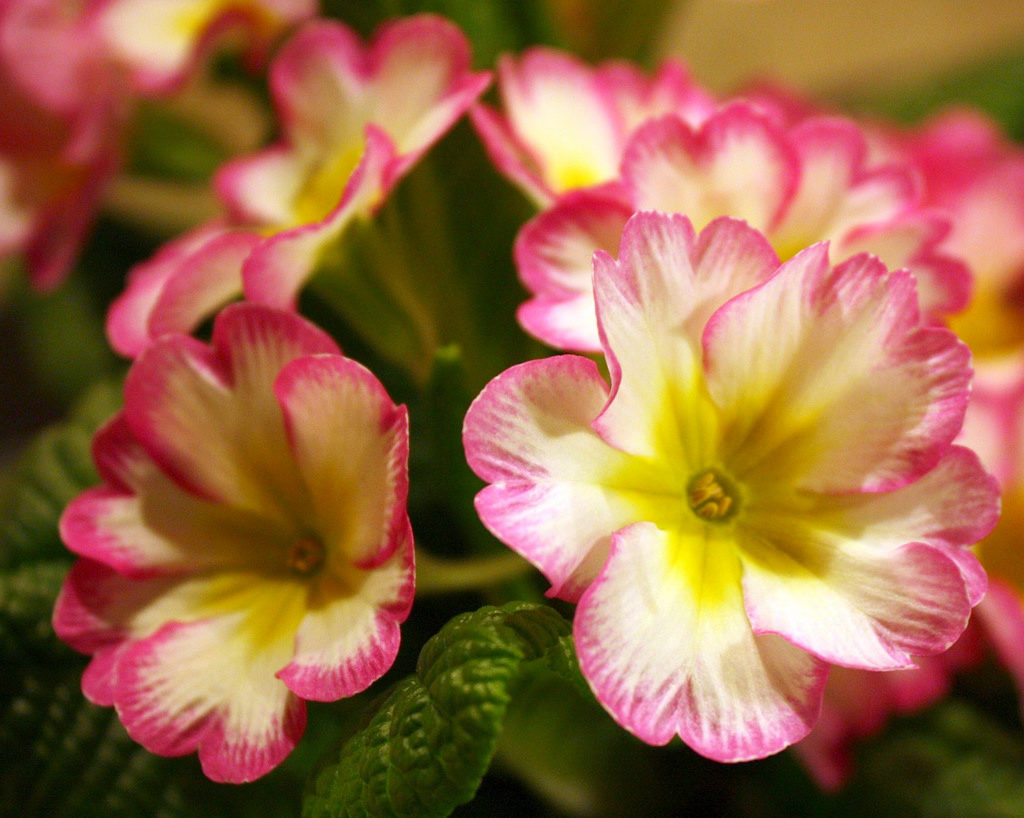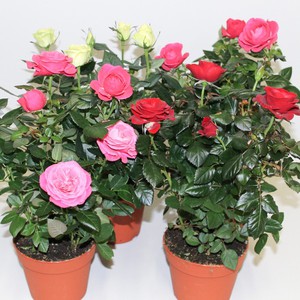 Indoor roses are not able to leave anyone indifferent, so many have a desire to buy them and enjoy the beauty of flowers. However, not always everything turns out exactly as expected at first.
Indoor roses are not able to leave anyone indifferent, so many have a desire to buy them and enjoy the beauty of flowers. However, not always everything turns out exactly as expected at first.
Often, after acquisition, the plant dies after a couple of months, and, possibly, earlier. This happens due to the fact that a novice gardener has no idea how to care for a flower in a pot.
To do everything right, you need to pay attention to every moment, so if you notice beautiful buds in the store, you should not buy them right away. The choice must be deliberate, therefore, certain factors must be taken into account, on which the development and growth of the plant depends.
Content
The first days of indoor roses at home
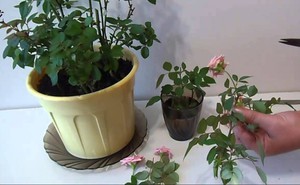 It is wrong to think that the number of buds determines the quality of flowering. The presence of young shoots is much more important. Their presence is a sign that the rose is in the growing phase.
It is wrong to think that the number of buds determines the quality of flowering. The presence of young shoots is much more important. Their presence is a sign that the rose is in the growing phase.
Therefore, when transplanting, there is a high probability that it will take root more easily and continue to grow. Therefore, for growing in indoor conditions, it is such a plant that is most suitable. However, planting worries for the grower do not end there. He must know how to care for a home flower.
When you finally decided on a plant variety and brought it into the house, then you need to solve an equally simple problem - how to properly transplant it into a pot. The main thing here is not to rush.
You need to give time so that the flower can adapt to the climate your apartment. When a few days have passed, take preventive measures to protect the rose from pests. The most readily available remedy for this is soap suds.
To do this, we go with a rose to the bathroom and apply soapy water to each leaf. This procedure must be done especially carefully, processing the leaves from the outside and inside. After that, you need to wash off the foam with running water.
It will be useful cold and hot shower... To do this, you need to water it with hot water for about 5 minutes, and then cold water for a similar period of time.
Immediately after this treatment, you need to remove the plant from the pot and examine the roots. If they have rotten areas, they must be carefully trimmed. Planting material is considered ideal if strong and light roots.
This completes the water procedures, and now the plant can be allowed to dry for several hours. After that, you can transplant into a ready-made substrate. But before you fill the container with them, you need to put drainage on the bottom. It is mandatory for every indoor plant, since without this it is impossible to provide favorable conditions for "living".
Features of the transplant after purchase
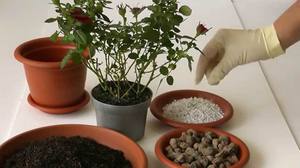 Often in stores, roses are offered in containers with peat. In this case, before transplanting into a pot, the plant must be removed and clear peat root system. This procedure will make it easier for you to care for the plant later.
Often in stores, roses are offered in containers with peat. In this case, before transplanting into a pot, the plant must be removed and clear peat root system. This procedure will make it easier for you to care for the plant later.
It is not recommended to transplant a flower into a pot without carrying out this operation, since in this case there will be two different soils in it. Then the gardener may face the following problems:
- Expending the usual rate of water, you will be able to moisten ordinary soil well, but at the same time the roots that are in a peat ball will not be provided with the necessary moisture.
- It will be extremely difficult for you to know when a plant needs watering. Indeed, even if the surface of the substrate is wet, this will not mean that there is enough of it in the peat lump.
- Failure to comply with the agricultural technology of transplantation can lead to the fact that the flower dries up, and this can slow down its development, and in some cases, even to the death of the plant.
Before planting, you need to inspect the indoor rose you bought: having found flowers and buds on it, they need to be cut off... As a rule, shops have a lot of them. For a young plant, flowers will only create additional difficulties for proper rooting.
First you need to wait for the moment so that the plant can take root in the new conditions. When the root system becomes stronger, then subsequently the flowers will appear by themselves.
After finishing the transplant, it is necessary to fertilizeeg Epin. So she will be able to quickly adapt to new conditions and enter into growth.
Optimal conditions for keeping
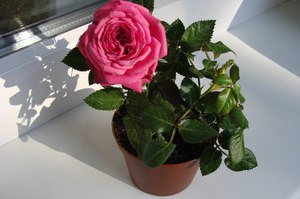 Leaving can have a big impact on how the flowers grow after a successful transplant. And this has its own peculiarities. First of all, you need monitor the temperaturewhich should not be too high even in winter.
Leaving can have a big impact on how the flowers grow after a successful transplant. And this has its own peculiarities. First of all, you need monitor the temperaturewhich should not be too high even in winter.
Although the rose is able to withstand slight frosts, however, the heat can significantly affect its condition, and not for the better. This flower thrives at temperatures up to 25 degrees.
Keeping a plant pot is recommended on a bright window... To create the optimal temperature regime for the plant, it is important to constantly ventilate and protect it from direct sunlight.
Therefore, it is recommended to place the pot on the west or east side. It is not recommended to keep the plant on the south window, since in this case even regular watering and airing will not protect it from overheating.
In such conditions, the leaves will soon begin to dry out and subsequently the buds will begin to fall off, so the florist risks not waiting for the beginning of flowering. It makes sense to keep the plant on the south window only in the cool season - in late autumn or winter.
The rose needs watering, which should be regular and abundant... Without this, its normal development is impossible. Neglect of this rule can lead to dry out of the earth, and this is fraught with the death of the flower.
It is especially important to water the plant with the required amount of water during flowering. However, you still need to observe a certain measure.

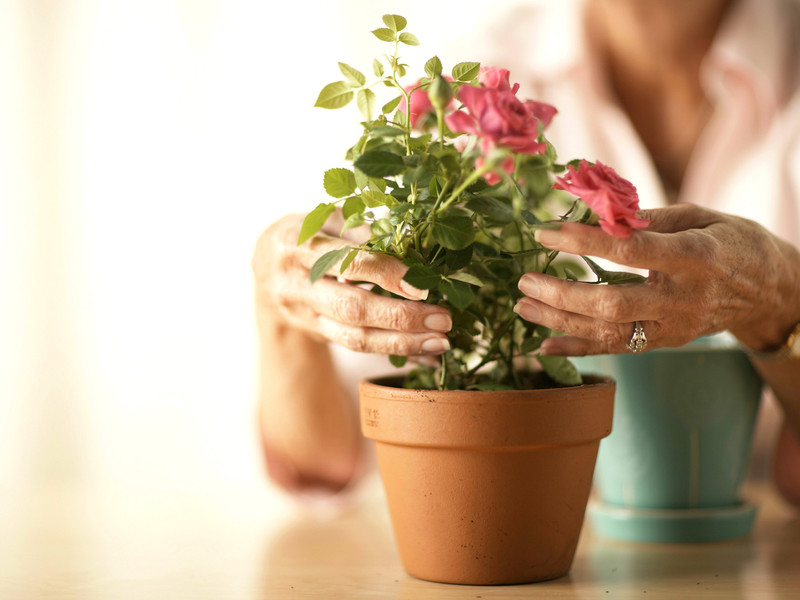
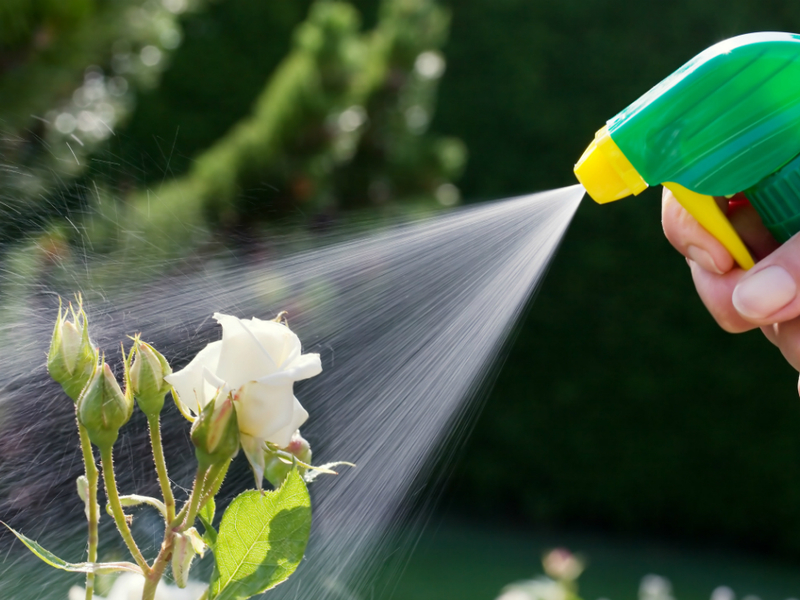

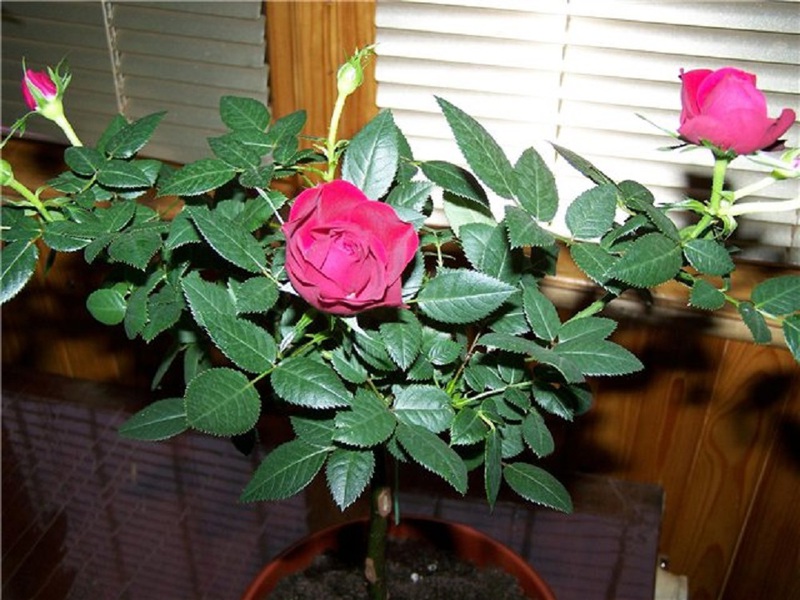
- there should be enough water in the pan so that it does not stagnate, therefore, after watering, you must wait about half an hour, and then the remaining water must be drained;
- if there are days when the sun begins to bake strongly, then at such moments the indoor rose is watered every day.
It is wrong to think that the leaves need to be sprayed every day. This exercise can only be done once a week to help keep the leaves clean.
If the air humidity is too high, you run the risk of encountering pests that can infect the flower.
Some of the dangerous are fungal diseases, therefore, you do not need to take too much care of the plant, since such care will lead to certain problems.
Top dressing
For the normal development of a flower, you need to create the most favorable conditions for it. This also applies to fertilization. Given that the plant is constantly forming new flowers, it needs feeding.
Therefore, in order for flowering to continue abundantly and further, it is necessary to apply fertilizer to the pot.
This should be done throughout the growing season, feeding the flower organic and mineral substancesby combining them. It is recommended to feed the indoor rose with liquid fertilizers, which can be purchased at flower shops.
How to properly care
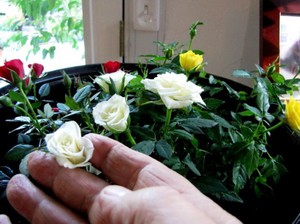 When the weather is warm outside, the flower is transferred to an open balcony or yard. Fresh air is good for the plant. As a result, it not only develops better, but also forms more beautiful and vibrant flowers.
When the weather is warm outside, the flower is transferred to an open balcony or yard. Fresh air is good for the plant. As a result, it not only develops better, but also forms more beautiful and vibrant flowers.
After waiting for the first buds to appear, they need to be cut. Such an operation stimulates the formation of new... In this case, the next flowers will be brighter and will not crumble until the very frost.
If you notice signs of wilting flowers, they should be promptly removed. Moreover, it is recommended to choose a moment for this when the petals still do not show signs of self-falling.
Also homemade rose needs periodic pruning... This operation is carried out in relation to withered leaves, dried twigs, which should be removed immediately, otherwise they will create a fertile ground for the appearance of diseases.
At the end of summer, you need to make changes to the feeding: during this growing season, it is not recommended to apply fertilizers rich in nitrogen. The fact is that in the fall the time comes when the home beauty is preparing to go into a state of rest.
Therefore, at this stage of development, it does not need such an element. It is already possible to keep a room rose on a cool loggia, while the air temperature on it should not be higher than 10 degrees.
The flower is at rest all autumn and winter until February. This is manifested by the yellowing of its leaves. Noticing that the leaves have begun to fall off, do not speculate that something is wrong with the plants. This is how they are all arranged. And later, when the time comes, and this happens in the spring, new leaves will grow in place of fallen leaves.
When February comes, the conditions of "residence" are changed for the rose so that it can get out of the state of sleep. To do this, she is taken out to a warmer room and transplanted into new land... If the cold did not harm the plant, then in the first weeks of March you can already enjoy the first flowers.
An effective technique that allows you to accelerate flowering is pruning... You need to do this at the time of the formation of the first kidneys. Cut the branches of a room rose by no more than a third.
If the shoot does not have buds, it is completely cut off. After that, abundant watering is carried out, fertilizers are applied and the room is regularly ventilated. When the weather is warm, the flower pot again taken out to fresh air.
Reproduction of a room rose at home
An effective method of propagation is cuttings. It is recommended to practice this summer. For this, already faded branches are selected - cuttings are harvested from them. Moreover, everyone should have no more than two or three buds.
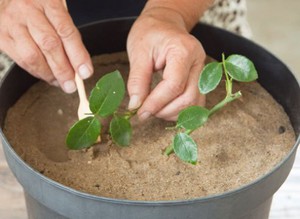 During the preparation of planting material, it must be borne in mind that the lower cut should have an oblique location, and the kidney itself is directed upwards. The top cut should be straight and slightly higher over the first bud.
During the preparation of planting material, it must be borne in mind that the lower cut should have an oblique location, and the kidney itself is directed upwards. The top cut should be straight and slightly higher over the first bud.- For rooting, cuttings are placed in water or a substrate consisting of peat and sand. It is advisable to prepare water or substrate in advance, as any delay can reduce the chances of survival of the cuttings.
If you decide to use water, then you should be aware of one important point: after a few days, the water in which you keep the cuttings may turn green, however, you cannot pour it out. When some of the water has evaporated, a new one is poured into the container.
After waiting for the formation of the first roots, the length of which should be 1−2 cm, you can engage in planting them. However, you need to be very careful with the cuttings, because if you handle it carelessly, you can easily injure the delicate roots.
Growing a rose is not as easy as some might think. It's a plant is quite whimsicaltherefore any negligence can negate all efforts.
For this event to be a success, you need to be as conscious as possible when choosing a flower. It is recommended to choose plants for planting that are about to start growing.
It is also necessary to choose the right mixture for planting in a pot, which should be loose in structure and provide the flower not only with moisture, but also with nutrients. Caring for a home rose is no less important, because the quality of flowering depends on it.


